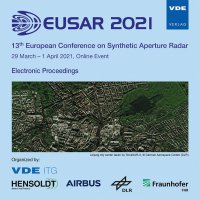Multi-aspect Polarimetric SAR Image Scattering Feature Information Coding and Classification with Machine Learning Approach
Konferenz: EUSAR 2021 - 13th European Conference on Synthetic Aperture Radar
29.03.2021 - 01.04.2021 in online
Tagungsband: EUSAR 2021
Seiten: 4Sprache: EnglischTyp: PDF
Autoren:
Li, Yang; Wang, Yanping; Lin, Yun (School of Information Science and Technology, North China University of Technology, Beijing, China)
Yin, Qiang; Zhang, Fan (College of Information Science and Technology, Beijing University of Chemical Technology, Beijing, China)
Hong, Wen (Key Laboratory of Technology Geo-spatial Information Processing and Application System, Institute of Electronics, Chinese Academy of Science, Beijing, China)
Inhalt:
Multi-aspect polarimetric SAR image set is rich of anisotropic scattering signatures and beneficial for terrain classification by using a series of implicit aspect-polarimetry-signature sequence. As the sequence information is hidden in the multi-aspect polarimetric sub aperture image set and difficult to use. An anisotropic scattering detection model based on the difference of polarization distribution can help to extract the pixel-wise aspect-signature sequence corresponding to one or more estimated scattering centers, and simultaneously consider the speckle reduction. Based on the anisotropic scattering detection, we propose a new merging framework combining aspect signatures with polarimetric decomposition signatures in this paper. First of all, the anisotropic scattering centers are detected to generate a new sequence images from the original sub-aperture image sequence. Dozens of polarimetric decomposition model and anisotropic scattering model components are performed on the new aspect-signature sequence images, and then to generate a batch of polarimetric signature vectors (PSVs) of each target. There are two methods to make use of PSVs in terrain classification and segmentation. One is to code the PSVs which represent each target’s aspect-polarimetry-signature first and then to classify, the other is to classify the original PSVs directly. Various machine learning methods, such as support vector machine (SVM) and Markov random field (MRF) model, have been investigated for validation and comparison by using a set of IECAS airborne P-band fully polarimetric circular SAR data.


